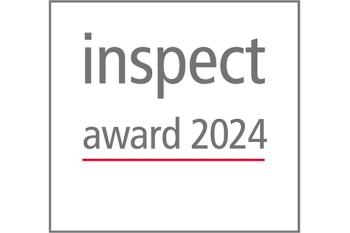Cameras inspect car door panels
The challenge for an automated inspection system
Red or blue ambient lighting? Cloth or leather? Functional design – individually arranged according to personal taste. What sounds like an interior designer’s advertising slogan, represents a challenge for an automated inspection system used to inspect car door panels.
Choice versus requirements
The combination of options a customer can select when building his own model, with the help of an online configurator, seem to be unlimited. High individuality and customer orientation equates to demanding tasks for automotive manufacturers. Due to varying feature details, the production of these automotive parts cannot be standardized. Each part must be set up separately. Simultaneously, industrial requirements have increased over the last few years: the automation and speed of production processes are expected to continue rising, as well as the required quality of processes and products. In addition, legal requirements like the traceability of goods and parts should be met. Thus, comprehensive documentation and visualization of production processes play an increasing role. Also, all this needs to be completed in both industrial and clean room conditions.
Visual quality control
The engineers at Ziemann & Urban are specialized in the field of inspection automation and quality control. For car manufacturer BMW they developed a tailor-made, end-of-line testing system that is capable of achieving 100 % control over produced car door panels. Before the door panels are sent to the BMW factory for final assembly, the functionality and correctness of all produced parts must be verified: is the equipment a precise match with the ordered items? Does the interior, such as the color of fabrics, leather or seams, the decor trim, sound system, and function buttons, match, too? Are there any defects in the spotlighting, colors of the ambiance, and contour illumination?
In the automotive industry, a combination of different metrology techniques is being applied most of the time. Visual inspection plays an important role. Depending on the special requirements of the inspected part, Ziemann & Urban sets up a fully automated end-of-line inspection system equipped with Allied Vision color cameras of different resolutions. Up to 17 cameras can be integrated in an end-of-line system, coupled with the necessary lighting. The cameras are placed above (side A) and beneath (side B) the inspected door panel.
Specific cameras for varied inspection tasks
The 5 Megapixel Manta cameras (Manta G-504) complete the attributive inspection and color recognition (for example the color of the leather, seam, seam contour, clips, rubber plug, function button). Complex and contorted systems often require the additional use of the ultra-compact Mako camera (Mako G-125) with its sugar cube housing sized 60.5 x 29 x 29 mm.
Several high-resolution 29 Megapixel Prosilica GT6600 cameras fulfill the task of checking the course and intensity of the line lighting in addition to the inspection of the surfaces. While covering a large field of view, the cameras deliver a resolution of 0.1 mm/ pixel required by the automobile manufacturer. Fast data transfer and efficient drivers for Windows allow short testing time. The complete inspection (visual and electric) of all parts only takes approximately 23 seconds, thanks to deferred workflow steps. Universal holders and the high number of cameras allow the inspection of four different door panels (for example front, back, left and right, for a coupé, cabriolet or SUV model) in one single system. To ensure a fast transfer of high data volumes, only GigE Vision cameras are used.
The door panels are transported to the inspection station equipped with the cameras either manually or automatically by workpiece carriers. The parts are connected to a power supply via a docking system. Supplied with electricity, the functionality and correctness of ambiance lighting and other electronic components can be checked. To ensure proper illumination, it is analyzed whether the light intensity right and uniform, or whether there are there any hot or dark spots. The cameras capture images of the door panels from different perspectives. As a result, high-resolution inspection images are available not only for the special regions of interest, but, also for those of non-inspected areas.
Analysis and protocol
Ziemann & Urban developed an analysis software that applies special analytical algorithms. Based on the generated images, it delivers a visualization of the inspection results. A diagram on the screen shows where and which kinds of defects are occurring and which components are affected. Each part identified as defective is listed in a rework protocol. To meet the requirements of quality management regarding traceability and documentation, all analysis results (displayed as both graphical presentation and pure data) for each part are saved and indexed.
By now, different manufacturers of BMW door panels in Europe, Asia and America benefit from this solution. Due to the automation and standardization of the inspection process they save time and costs despite the high individuality of parts. At the same time, automotive suppliers comply with the legal and economical demands of traceability and 0 % error rate while remaining competitive.
Andreas Ziemann, Managing Director at Ziemann & Urban is convinced of the benefit for the user: “Allied Vision cameras deliver high quality color images that make the automated inspection very precise and efficient.” As the request for even faster production processes and higher number of cycles coupled with the rising number of pieces continues increasing, the inspection experts are already working on a new system, equipped with the newest high resolution and high-performance GigE Vision Prosilica GT cameras.
Contact
Allied Vision Technologies GmbH
Taschenweg 2A
07646 Stadtroda
Germany
+49 36428 / 677- 0
+49 36428 / 677- 28








